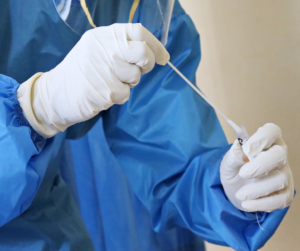Alaska Native people are encouraged to register as a blood or marrow donor
 A bone marrow transplant is a life-saving procedure for people with blood illnesses or cancers, such as leukemia or lymphoma—but it’s harder for Alaska Native people to find matches because they are underrepresented in the donor database.
A bone marrow transplant is a life-saving procedure for people with blood illnesses or cancers, such as leukemia or lymphoma—but it’s harder for Alaska Native people to find matches because they are underrepresented in the donor database.
Every three to four minutes, someone in the U.S. is diagnosed with a blood cancer. NMDP, formerly known as the National Marrow Donor Program, connects patients with a matching donor for a life-saving blood stem cell or bone marrow donation.
Less than 1% of Alaska Native and American Indian people are represented in the largest and most diverse stem cell registry in the world. Patients in need of transplants are more likely to find a donor from someone of their race.
Doctors look for a donor who matches their patient’s tissue type, specifically their human leukocyte antigen (HLA) tissue type. If you have an uncommon HLA tissue type, you might be the only one out of more than 41 million potential donors in the world who can save a person’s life. Every person who joins the registry gives patients more hope of finding the match they need.
Joining the blood stem cell donor registry requires only a simple cheek swab. As research has shown that cells from younger donors lead to better long-term survival for patients, you must be between the ages of 18 and 40 and meet NMDP’s medical guidelines to join the registry. For more information, visit bethematch.org.


